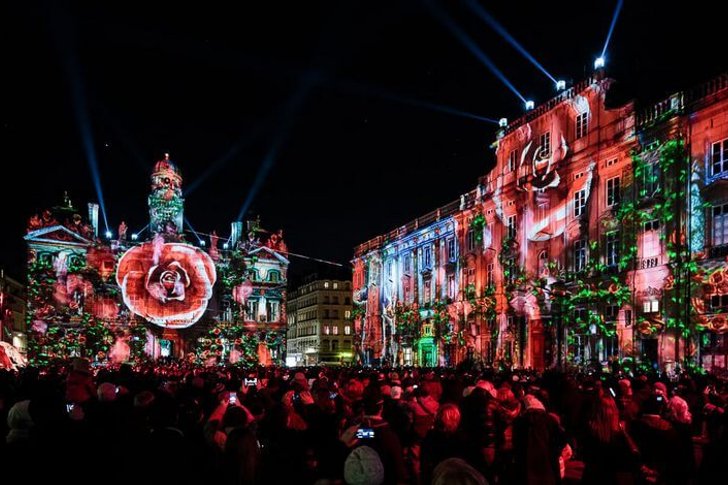From the very beginning of our era, Lyon played a leading economic and administrative role in the region. Roman emperors were born here, the first Christian churches were built and the largest fairs worked. Thanks to such a rich history, ancient amphitheaters and baroque mansions of the 19th century peacefully coexist in the city.
There are many museums in Lyon that are of particular value to the whole of France. Local cathedrals have retained the outlines of the Early Middle Ages, despite the overweight layer of centuries. The old city quarters are full of architectural surprises that enthusiastic tourists are discovering. A walk around Lyon is an unforgettable excursion into two thousand years of history, delight in local cuisine and, of course, vivid impressions of a truly French atmosphere.
What to see and where to go in Lyon?
The most interesting and beautiful places for walking. Photos and a short description.
- Old Lyon
- Croix-Rousse quarter
- Trabouli
- Place Bellecour
- City Hall of Lyon
- Bartholdi Fountain
- Lyon Cathedral
- Basilica of Notre Dame de Fourviere
- Saint Nisier Church
- Church Saint-Georges
- Lyon Museum of Fine Arts
- House-Museum of the Lumière Brothers
- Confluence Museum
- Museum of Miniatures and Cinematography
- Museum of Gallo-Roman Civilization
- Antique theater on the hill of Fourviere
- Amphitheater of the Three Gallias
- Hotel Dieu
- Lyon Opera
- Exchange Palace
- Fourviere metal tower
- Fresco Le Mur Des Canuts
- Fresco des Lyonnais
- Golden Head Park
- Festival of light
Old Lyon
Historic quarter at the foot of the Fourviere hill. Once on this place there was an ancient settlement of the Gauls. A large number of attractions are concentrated in Old Lyon. Here you will find traditional restaurants - bushons. The main building of the territory fell on the period of the XII-XVI centuries. Old Lyon is a combination of three quarters: Saint-Georges, Saint-Jean and Saint-Paul.
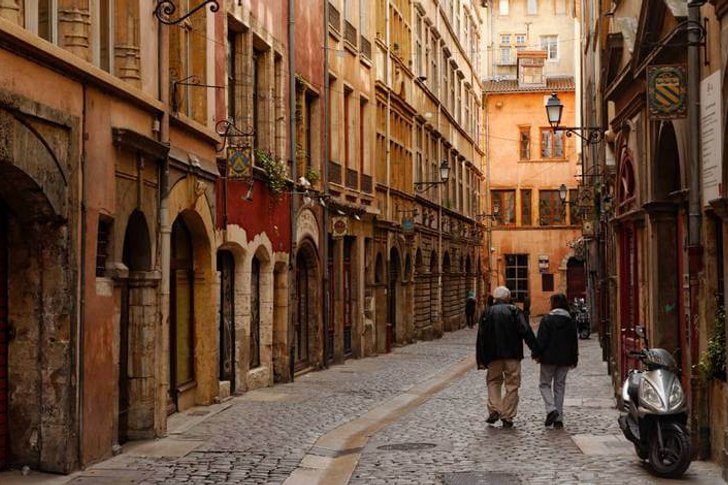
Croix-Rousse quarter
The place where in the 19th century weavers moved to a permanent place of residence. The name of the quarter comes from the Croix-Rousse hill of the same name. As you know, since the beginning of the 19th century, Lyon has become the center of the country's textile industry, since it was here that the loom was invented. The professional community of workers in weaving mills grew rapidly, it needed more living space, and as a result, the weavers chose Croix-Rousse.

Trabouli
Traboules are a unique feature of Lyon architecture. They are through passages through buildings that connect different streets. Traboules were built in different architectural formats - in the form of covered galleries, lanes and narrow passages. In our time, these elements of the urban environment have become tourist attractions. Mostly, traboules are concentrated in the historical part of Lyon.
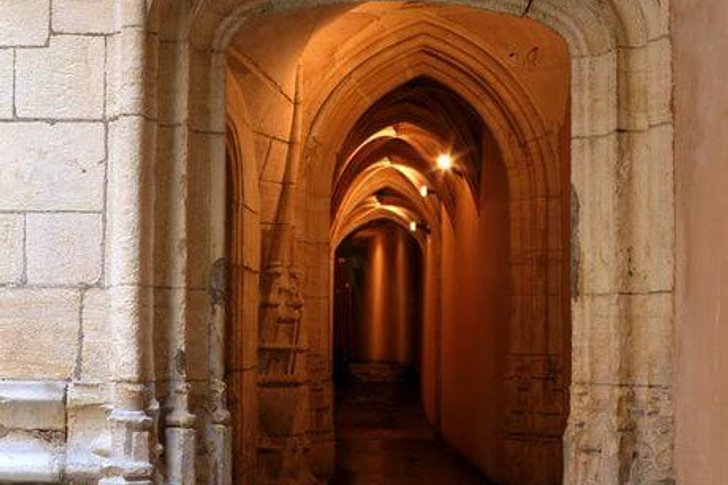
Place Bellecour
A picturesque square in the center of Lyon, which began to be actively built up from the 17th century. Napoleonic military parades were held here in the 19th century. Nowadays, this place is one of the busiest in the city. In the central part of the square there is a monument in honor of the “Sun King” Louis XIV, created by the sculptor F. Lemo. The brilliant monarch is depicted as a powerful Roman emperor.

City Hall of Lyon
The town hall was erected in the middle of the 17th century according to the project of S. Maupin. The facade of the building overlooks Terro Square, which a few centuries ago was just a dirty city market. Thanks to the construction of the town hall, Terro was transformed and turned into the administrative center of Lyon. The architecture of the city council building is dominated by the baroque style, the interior is decorated with valuable works of art.
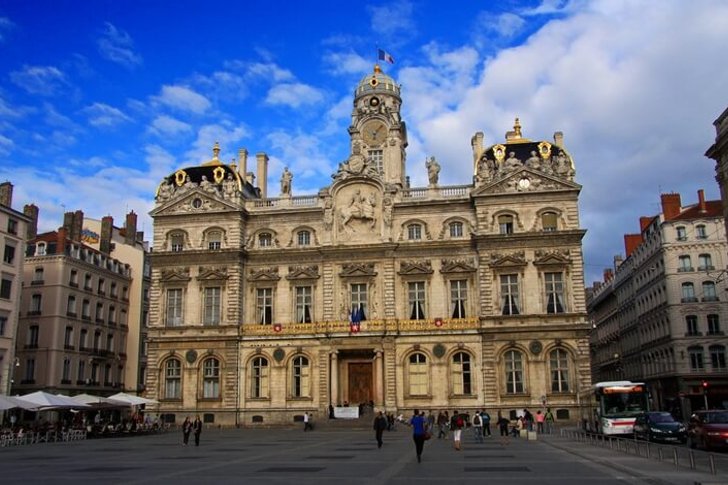
Bartholdi Fountain
The sculptural group of the fountain is located on Terro Square. It was designed by the sculptor F. Bartholdi, who was the author of the famous American Statue of Liberty. The master was building a fountain for the city of Bordeaux, but the city authorities decided that they did not have enough funds to finance the project. As a result, the fountain was sold to Lyon. However, there is a legend that the Lyons simply stole the fountain from Bordeaux.
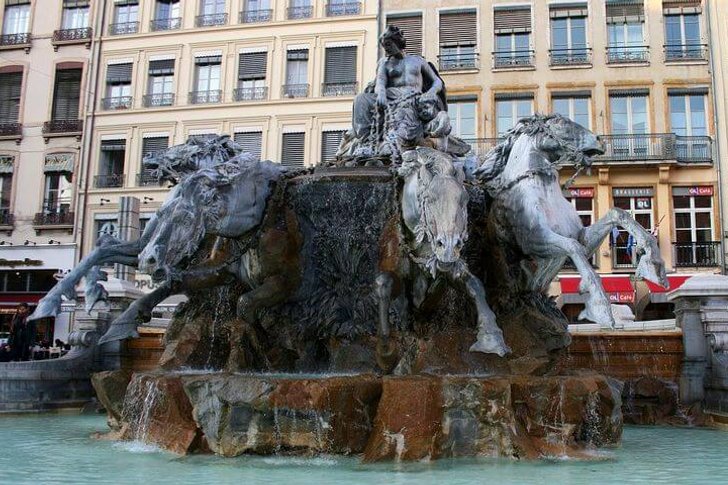
Lyon Cathedral
The main city temple, erected in the XII-XV centuries. For its construction, materials obtained from the ruins of ancient Roman structures were used. The architecture of the cathedral harmoniously combines Romanesque and Gothic styles. The temple was looted during the French Revolution. It took a century for the authorities to undertake its restoration. The cathedral was restored only at the beginning of the 20th century.

Basilica of Notre Dame de Fourviere
Temple of the second half of the 19th century, located on the top of the Fourviere hill. It was erected on the site of a 12th-century basilica that was destroyed during the confrontation between the Catholics and the Huguenots. Notre-Dame-de-Fourviere owes its appearance to the events of 1870, when the townspeople prayed for protection for Lyon from the Prussian troops and promised to build a temple if the heavenly forces descended to their requests. As a result, the enemy army never reached the city.

Saint Nisier Church
The temple is dedicated to Saint Niketios, who lived in Lyon in the 6th century. The church is located in the Preskill quarter. The structure was built in the Early Middle Ages on the ruins of a Roman temple, since then it has been rebuilt many times. The last major reconstruction took place in the 16th century. The oldest building in the church is the crypt dating back to the 6th century. It is located in the temple dungeons.
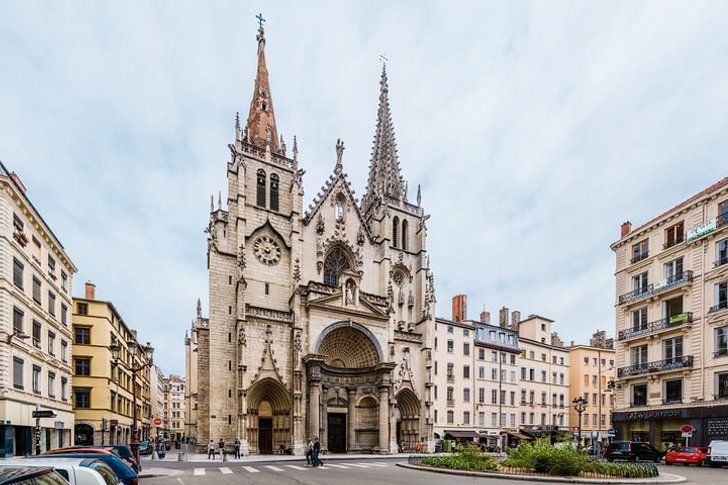
Church Saint-Georges
The temple adorns the embankment of the Saone River. The church was built in the Gothic style. Judging by written evidence, it has existed since the 9th century, but the modern building was erected later - in the 16th-17th centuries. The last reconstruction was made in 1844 according to the project of P. Bossan. During the restoration and addition of new elements, they tried to preserve the original medieval appearance of the building as much as possible.
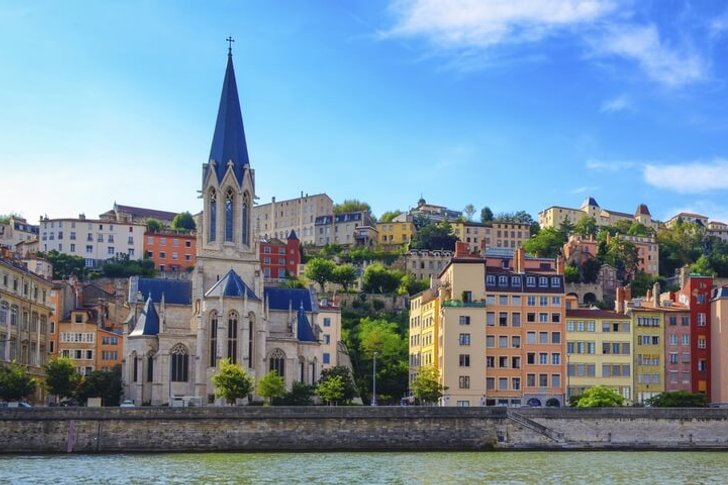
Lyon Museum of Fine Arts
The museum ranks second in cultural significance after the Louvre in Paris, as it has an invaluable collection of works of art from the 15th-20th centuries. The museum funds contain exhibits belonging to the era of Ancient Egypt, Ancient Rome and Greece. Until the 17th century, the museum building housed a Benedictine monastery, which was reconstructed by decree of Louis XIV. In the 19th century, it housed an art school.
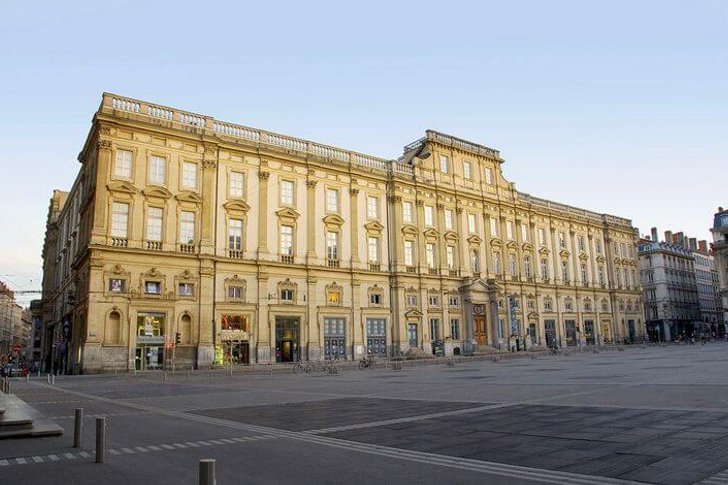
House-Museum of the Lumière Brothers
In Lyon, the Lumiere brothers set up their first experiments in the field of cinema. The museum, named after the pioneers of cinema, is located in the building of the former Lumiere family workshop. Here the brothers lived, worked and conducted experiments on transferring images to the screen. The museum's collection includes old films, photographic plates, the first "cinematic" equipment, as well as the very first films.

Confluence Museum
Modern Museum of Natural History, opened in 2015. The futuristic building that houses the collection was designed by an Austrian architectural firm. Confluence is not only a static exposition, there are also many classrooms, a bookstore, workshops, cafes in the building. The project cost 185 million euros. The building really turned out to be grandiose and similar to an alien spaceship.
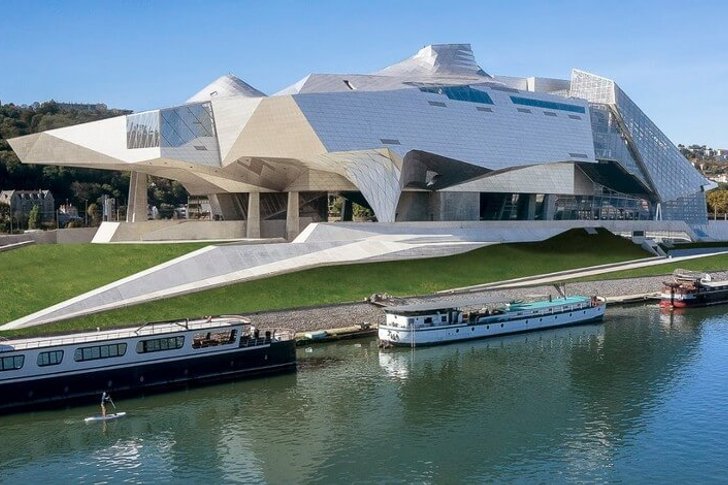
Museum of Miniatures and Cinematography
The museum collection is located in an old mansion of the 16th century - the House of Lawyers. The building is of great historical value and is under the protection of UNESCO. The exposition is quite original, as it allows you to look behind the scenes of the "dream factory" and understand how blockbusters are created. The museum exhibits miniatures of interiors, buildings, as well as scenery that were involved in the filming of famous films.
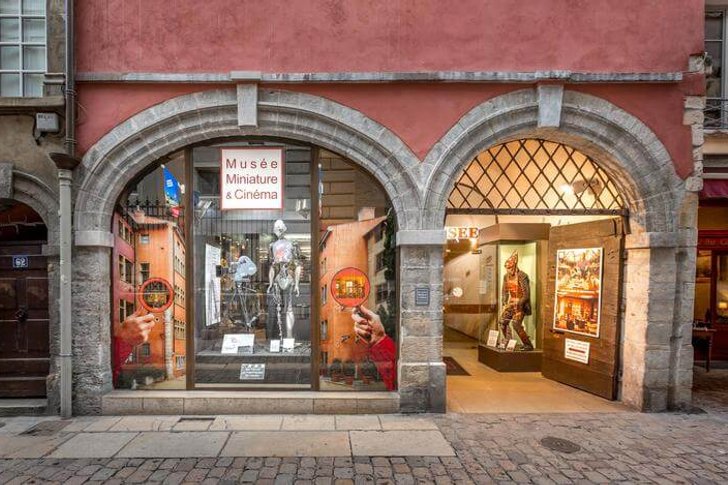
Museum of Gallo-Roman Civilization
The museum was founded in 1975. It is located in a historical place on the hill of Fourviere, where a Gallo-Roman settlement existed since ancient times. The exposition consists of archaeological finds obtained as a result of excavations in the territory of Lyon and its environs. Having studied local artifacts, one can get an impression of how the daily life of the Gauls and Romans went, what religious beliefs prevailed in that era and how people spent their free time.
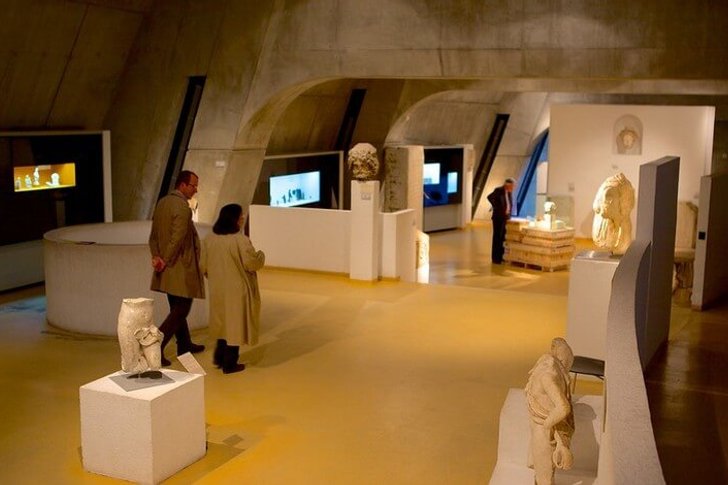
Antique theater on the hill of Fourviere
The building belongs to the era of Ancient Rome, it was erected in the 1st century BC. e. In the second century after the advent of our era, the theater was expanded and began to accommodate up to 10 thousand people. Basically, musical comedies were played on the stage, as evidenced by the stone wall, which perfectly reflects sound waves and creates a good stereo effect. The theater was excavated in the 19th century, and since the beginning of the 20th century, a number of restoration works have been carried out.

Amphitheater of the Three Gallias
The ruins of an ancient Roman amphitheater, located on the slopes of the Croix-Rousse. During the reign of the Roman Empire, the “Council of Three Gaul” gathered at this place - the imperial provinces of Belgica, Lugdun Gaul and Aquitaine. This event has always been accompanied by magnificent celebrations, games and performances that took place on the territory of the amphitheater. The scene was discovered as a result of excavations of the XIX-XX centuries.

Hotel Dieu
An architectural monument of the 17th century. Initially, the building was used as a hotel for visiting clergy, then it was converted into a hospital. It should be noted that the hospital is still functioning. The building is built in the classical style and crowned with a monumental dome. In 2011, the complex was recognized as an architectural monument and the process of withdrawing existing medical institutions outside of it began.
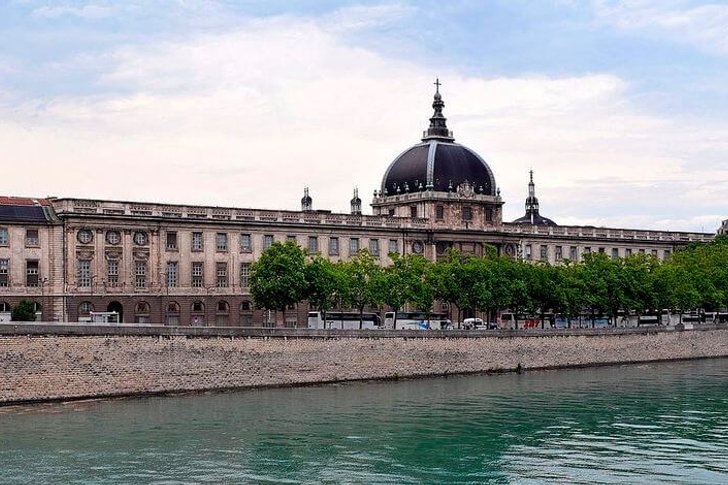
Lyon Opera
Opera stage of Lyon, housed in a building built in 1993. The first musical theater appeared in Lyon in the middle of the 18th century. But, as often happens, the building fell into disrepair and was demolished, replaced by a more modern and spacious one. But retaining in appearance some of the historical elements of the facade of 1831. The auditorium of the modern building is designed for 1100 seats, which is not very much for Lyon, given its half a million inhabitants.
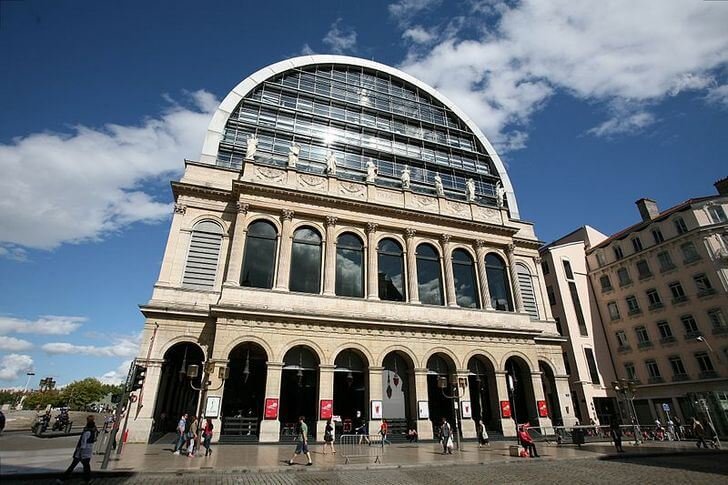
Exchange Palace
A magnificent building in the style of classicism and baroque, decorating the space between the central squares of Bellecour and Terro. The building was erected in the XIX century during the highest economic prosperity of Lyon. The grand facade consists of many arched windows, columns and decorative elements. The interior is skillfully decorated with sculptural compositions and paintings by skilled craftsmen.

Fourviere metal tower
A metal structure erected at the end of the 19th century in imitation of the Eiffel Tower in Paris. Since the middle of the 20th century, the construction has been used as a TV tower. The building reaches a height of 85.9 meters, the height above the Saone River is 350 meters, which corresponds to the parameters of the Eiffel Tower. The structure was erected in opposition to the Basilica of Notre-Dame-de-Fourviere as a monument of republican architecture.

Fresco "Le Mur Des Canuts"
Street fresco decorating the facade of one of the buildings on the Croix-Rousse hill. The painting was created in 1986, but since then the image has been significantly supplemented. The painting depicts the daily life of the inhabitants of the quarter, houses, stairs, people, townspeople, relaxing on the terraces and visiting shops. From afar, the drawing seems very realistic, the first time it is difficult to understand where the real characters are and where they are drawn.
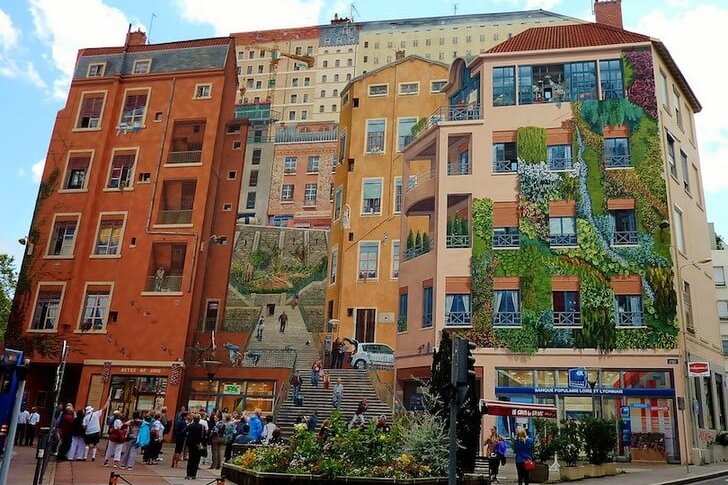
Fresco des Lyonnais
A unique fresco depicting events from the history of France. The painting was created in the 90s. XX century. The focus is on famous personalities who left their mark on the history of the country, artists and even book characters. On the fresco you can see A. de Saint-Exupery, the Lumiere brothers, P. Bocuse, Emperor Claudius and other historical figures. The fresco is very skillfully done and creates the effect of a picture come to life.
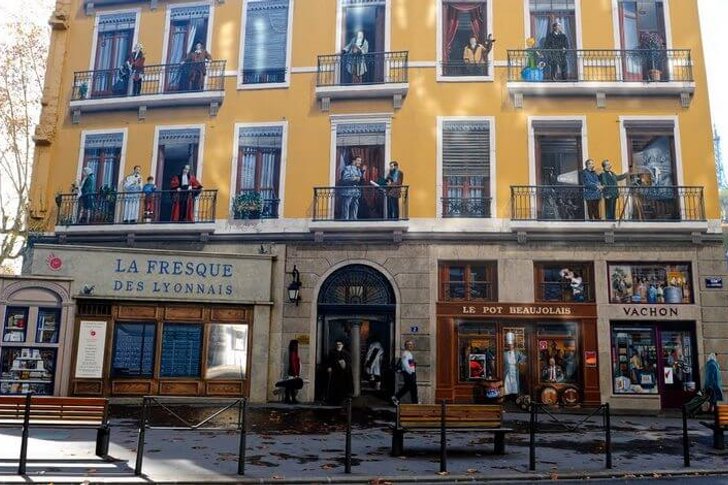
Golden Head Park
City park in the northern part of Lyon, which is considered the largest in France. Within its boundaries there is a zoo, a botanical garden, rose gardens, spaces for cycling and sports. There are also artificial reservoirs where you can ride a boat. The park was formed in the middle of the 19th century on the lands that once belonged to the aristocratic family of Lambert.
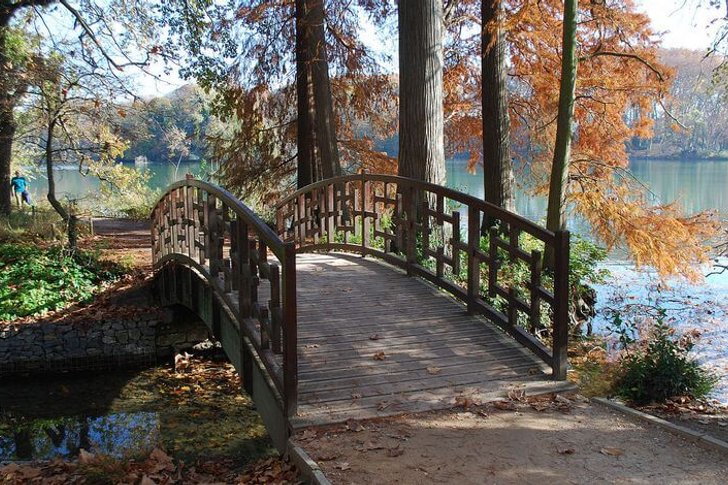
Festival of light
An annual festival of light that takes place in Lyon in December and lasts 3 nights in a row. The history of the holiday began in the 17th century, when grateful citizens praised the Virgin Mary for delivering the city from the plague and lit fires in the streets in her honor. During the festival, bizarre light installations are shown to the audience. At this time, about 4 million tourists from different countries and from France itself come to Lyon.
